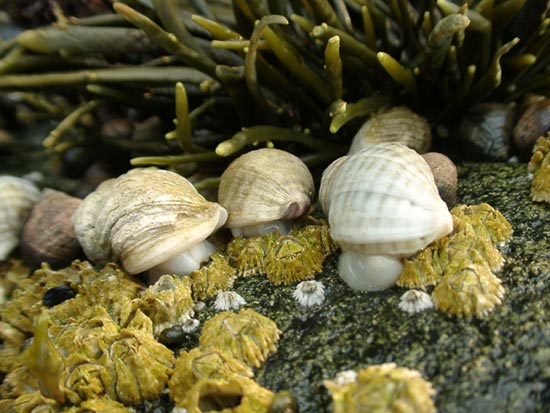Snail Shells Getting Longer

The shells of certain Atlantic Ocean snails — a key link of the food chain — have gotten significantly longer over the past century, a new study finds.
Using museum collections from the Academy of Natural Sciences of Philadelphia, a team of researchers measured the shells from 19 lots of shells gathered between 1915 and 1922, and compared them with samples from the same 19 locations today.
They found that the shell lengths increased by 22.6 percent between the early 20th century and today.
"We found a dramatic increase in size, which could affect the entire intertidal food chain," said study leader Jonathan Fisher of Queen's University in Canada.
Previous and continuing research has also found that large snails tend to prey on mussels and barnacles and spend less time resting between feedings, compared to small snails.
Researchers are unsure exactly why the snails are growing so large, so rapidly.
"Many documented environmental changes between these time periods could affect snail survival or growth rates," Fisher said. "We're finding fewer predatory fish now, which would allow the snails to grow."
Get the world’s most fascinating discoveries delivered straight to your inbox.
The temperature of the water today is warmer than 100 years ago, which could also account for faster growth of the snails, he added.
"But regardless of the factors that contributed to the size increase, the marine landscape is changing dramatically on a historic timescale. That's what is really important here," Fisher said.
The study's findings are detailed in the March 23 issue of the journal Proceedings of the National Academy of Sciences.



